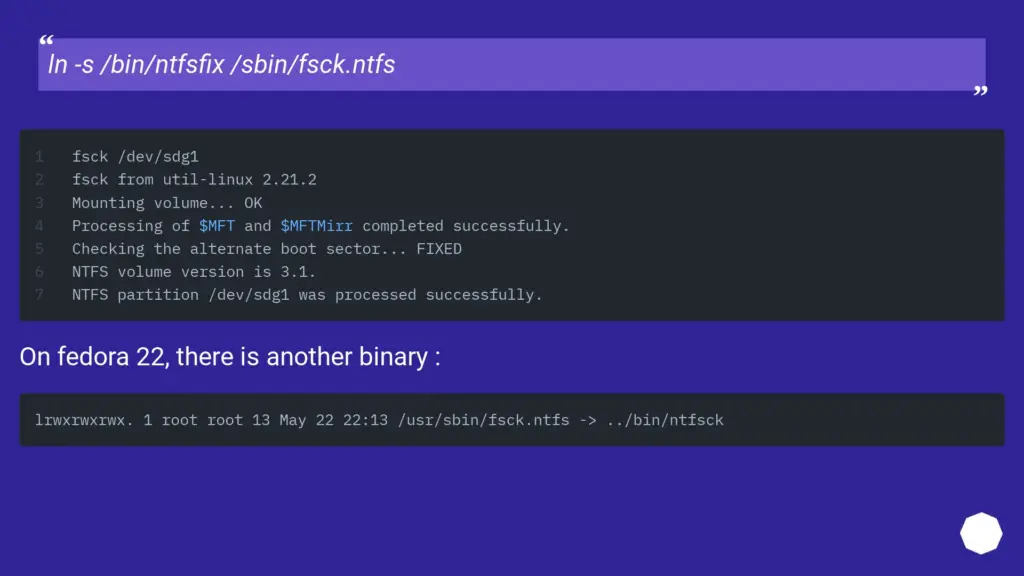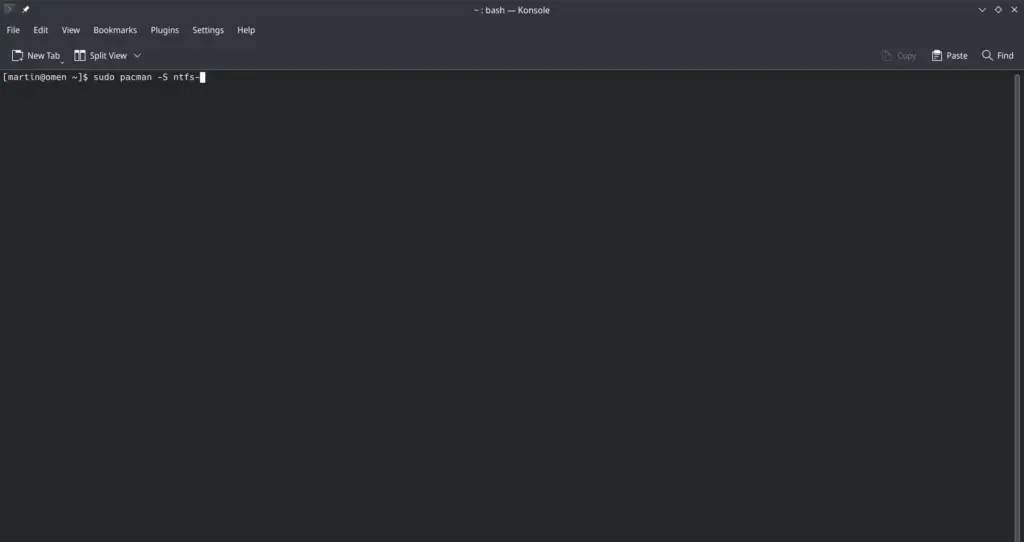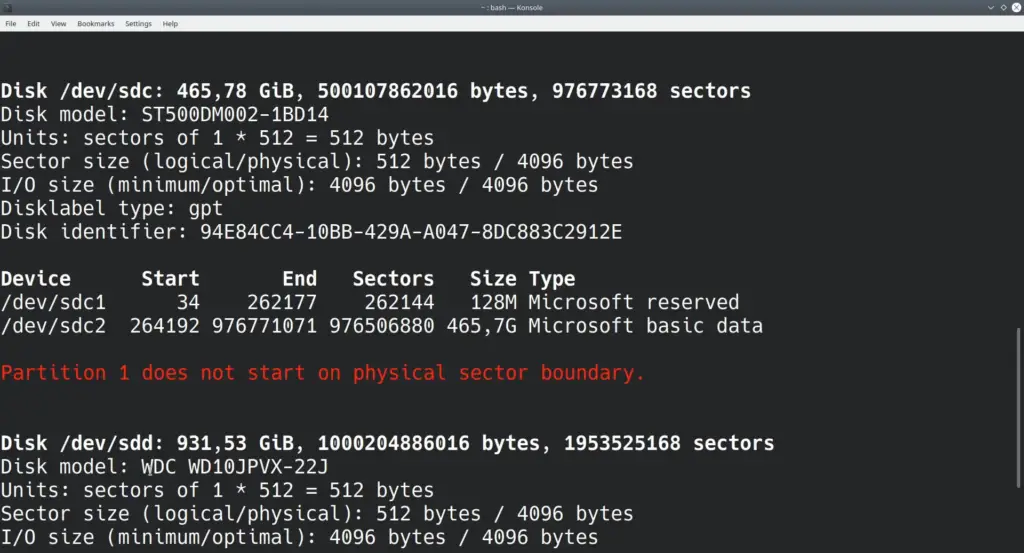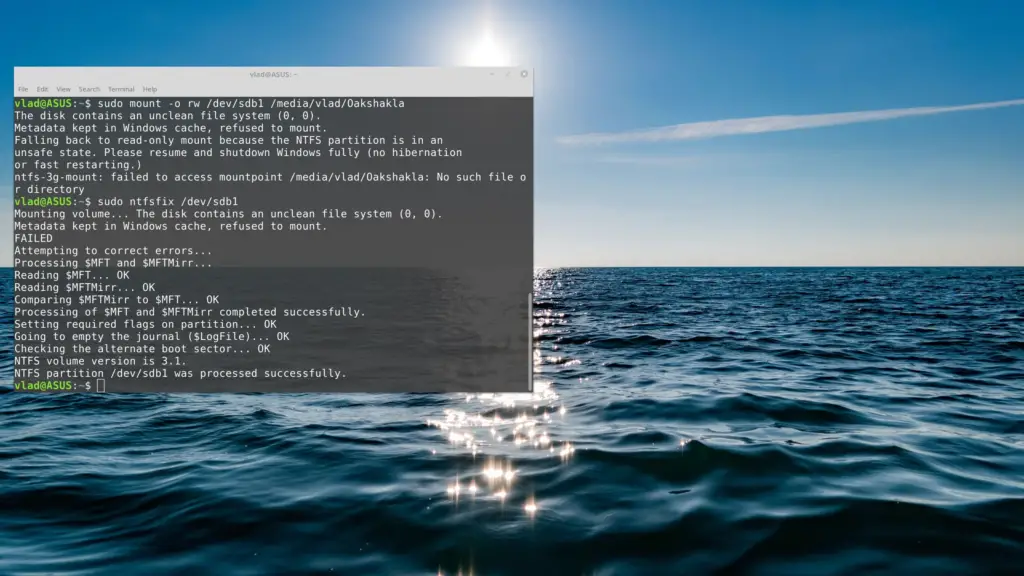Are you a Linux user looking to access files from an NTFS file system? You may have heard that accessing data stored in Windows-based systems on Linux can be tricky. Fortunately, accessing NTFS (New Technology File System) partitions using Linux is now easier than ever before! In this post, we’ll explore the workflow background information and provide step-by-step instructions on how to read NTFS drives with your favorite version of Linux. So if you’re up for a challenge and ready to take on tech issues head-on, keep reading – by the end of this guide, you should have no trouble opening these particular types of file systems. Let’s dive into what makes IFS (Intermediate File Storage) compatible with different kinds of operating systems right away!
What is a File System and Which Types Are Available?

There are several different types of file systems that can be used, each with their own set of features and characteristics. Some popular ones include:
- FAT32 (File Allocation Table 32): A system developed by Microsoft for older versions of Windows, but is still widely used today. It is simple to use and provides the ability to access any type of file in order to view or edit.
- NTFS (New Technology File System): Microsoft has developed this file system specifically for its Windows operating system, and it serves as the default system. It offers larger file sizes, better security, and improved data integrity over FAT32.
- EXT (Extended File System): Developed by Linux and is a popular file system for Linux-based operating systems. It allows for larger files, better security, and more robust features than FAT32.
- HFS (Hierarchical File System): Developed by Apple and is the default file system for macOS. It is optimized for Mac computers and provides a simpler way of organizing data compared to other systems.
- APFS (Apple File System): The newest file system for Apple computers, which was developed to replace HFS. It offers improved performance, security, and reliability over the previous systems. [2]
Each of these file systems provide various advantages and disadvantages depending on your particular needs. Depending on the type of data you need to store and the features you require, it can be beneficial to research and understand each system in order to determine which one is best for your needs.
In addition, some file systems may have special features that are designed for specific applications or tasks. For example, ZFS (Zettabyte File System) was developed specifically for large-scale data storage and offers features such as compression, encryption, and snapshots. In other cases, some file systems may only be available on certain operating systems or hardware platforms.
How Do File Systems Work?
Computer file systems are the ways in which data is stored and organized on a computer. In order to understand how they work, it helps to know a bit about their structure. A file system stores data as files which are organized into directories. Each directory can contain other directories and files, forming a hierarchical tree structure that allows for easier organization and navigation of the data. [3]
At the top level of the tree is a single directory called the root. It can be considered like an index that links all other directories and files together. Each file in the system has its own name, size, location, and type. Data within a file is stored in an organized format according to the type of data it contains (for example: text, music, video, etc.).

Data is written to the file system in a special coding language called hexadecimal. This allows the computer to understand how data is stored and how it can be accessed. When you open or save a file, the computer converts the hexadecimal code into something you can read (usually English).
Most operating systems come with a file system that is designed to organize and store data. It also helps keep track of changes in the data so that it can be recovered if needed. In addition, it protects files from being corrupted or deleted by other users who might have access to the same computer.
File systems are an important part of any computer system and understanding how they work can help you better manage your data. Knowing the basics of file systems will also make it easier to troubleshoot problems that may arise with your computer or data storage device. By understanding how a file system works, you can ensure your data is secure, organized, and easy to access when needed.
The process of setting up and configuring a file system can be complex, so it is important to make sure you understand each step. Additionally, regular maintenance of the file system should be done in order to keep your data safe and secure. This includes backing up your data regularly and checking for any errors or corruptions that may occur. By taking the time to learn how file systems work, you can be sure your data is properly managed and secure. [4]

What are the Benefits of File Systems?
File systems are a useful way of organizing and managing data on any type of computer system. They provide a hierarchical structure for storing, categorizing, and retrieving information. File systems also offer crucial security features to help protect data from unauthorized access or malicious attacks. Here are some of the key benefits of using file systems:
- Data Storage: File systems allow users to save data in an organized manner for easy retrieval. It provides a hierarchical structure for categorizing and searching for files, making it easier to find specific information quickly.
- Security: File systems provide several levels of security, including file permissions that limit who has access to certain files or folders. Additionally, they can be configured with encryption protocols to protect data from unauthorized access.
- Data Integrity: They are designed to maintain the integrity of stored information, preventing accidental or intentional modification or deletion of data. They also help detect any corruptions or errors that may occur during file transfers.
- Backup and Recovery: These systems offer backup facilities to protect against data loss due to hardware failure, human error, or malicious attacks. Additionally, there are recovery options such as data snapshots or rolling back to previous versions in order to recover lost or corrupted files.
- Scalability: Using file systems allows users to easily scale their storage needs up or down depending on the size of their business and data requirements. They can also be configured with automatic storage solutions for seamless management of larger datasets.
- Cost Efficiency: They are generally more cost effective than other data storage solutions, as they can be configured to use existing hardware and often require minimal maintenance. [5]

What Is NTFS?
NTFS, also known as the New Technology File System, is a proprietary file system meticulously crafted by Microsoft exclusively for Windows operating systems. Its advanced design and architecture ensure optimal performance, reliability, and security, making it a preferred choice for managing data on Windows-based platforms. NTFS offers higher security features than the other popular file systems used today – FAT32 and exFAT.
It provides better performance than FAT32 and exFAT, as it uses advanced data structures that allow for faster access to files. Additionally, NTFS supports features such as Access Control Lists (ACLs), which are used to define who can perform certain operations on specific files or folders. This makes NTFS an ideal file system for users who need higher levels of security and performance.
NTFS is also more efficient than FAT32 or exFAT, as it is able to store information in a more organized manner. NTFS uses a Log File System (LFS) which allows for the system to record changes made to data within files and folders before they are written to disk. This means that if an issue arises with data, the LFS can be used to restore the information back to a point before it was modified.
Overall, NTFS is a powerful and versatile file system that offers better performance and security than other popular file systems. It is ideal for users who need high levels of accuracy, speed, or security from their systems. For these reasons, NTFS is a choice for many Windows users. [6]

What File Systems Can Linux Use?
Linux is an open-source operating system that can be used on multiple types of hardware and supports multiple file systems. The most common file systems used in Linux are the ext4, ext3, xfs and btrfs file systems. Each of these file systems has its own strengths and weaknesses, so it’s important to understand the differences between them before choosing one:
- Ext4 is the most popular and widely used file system in Linux, as it was designed to be as robust and reliable as possible. It offers better performance than ext3 due to its improved data structures and larger maximum file size (up to 16TB). It also supports journaling, which allows for faster recovery after a crash or power failure.
- The ext3 file system is an older version of ext4 and was the default file system used in Linux until 2009. It has been largely superseded by ext4, but it still provides reliable performance and storage capabilities.
- The xfs file system is optimized for large-scale data storage applications and provides better performance than the other file systems when dealing with large files. It also offers improved scalability and faster performance when dealing with a lot of small files.
- The btrfs file system is a newer technology that was designed to address some of the shortcomings of ext4 and xfs. It provides features such as data checksums, incremental backups, pooling, RAID support and online defragmentation. Btrfs also provides better scalability and performance when dealing with a large number of files. [7]
Can Linux Read NTFS Drives?
Linux can read NTFS drives. In fact, the ability to read and write data from NTFS drives is one of the main features that make Linux such a powerful operating system. With its vast collection of open-source tools, it provides users with an easy-to-use solution for accessing different types of file systems.
Linux has built-in support for NTFS, meaning you can access the contents of your Windows drive without having to install any additional drivers or software. To do so, open up a terminal window and type in `sudo mount -t ntfs-3g /dev/sda1 /mnt` (where `/dev/sda1` is the name of your NTFS drive and `/mnt` is the directory you wish to mount it on). This will mount the drive so that you can view its contents.

Another advantage of using Linux to access NTFS drives is the ability to access permissions, such as read-only or write-access. By default, most distributions of Linux will mount NTFS drives with read-only permissions. To enable write access, you just need to use the `-o rw` flag when mounting.
It’s also worth noting that Linux can also be used to share files between Windows and Linux systems. By using Samba or NFS, you can easily set up a secure connection so that both systems can be used to transfer data between them.
How to Keep Your Files Safe?
It’s important to keep your personal and work-related files safe. Here are a few key steps you can take to protect your data from loss or theft:
- Back Up Your Data Regularly – Make sure you backup all of your important files on an external hard drive or cloud service. Doing regular backups will ensure that you have multiple versions of your files in case something goes wrong.
- Enable Multi-Factor Authentication – Multi Factor authentication adds an extra layer of security to your accounts and helps protect against unauthorized access. It requires more than just a username and password, such as a code that’s sent to your phone or email address.
- Install Antivirus Software – Keep your computer safe from malware and other malicious software by installing antivirus software. This will help protect you from threats like ransomware, phishing attacks, and more.
- Use Strong Passwords – It is important to use strong passwords that are unique to each of your accounts so they can’t be easily guessed or cracked. You should also change your passwords regularly.
- Be Wary of Links and Attachments – When you receive emails with links or attachments, make sure to review them carefully before clicking any of them. It’s best to avoid opening suspicious emails or files from unknown senders.
- Protect Your Devices – Make sure that all devices used for work are password-protected as well as encrypted when not in use. This will help prevent unauthorized access to your data.
- Utilize Cloud Technology – Cloud storage can be a great way to store and back up your files, as they are stored offsite and more secure than traditional hard drives or disks. Additionally, cloud technology makes it easy to share and collaborate with others while ensuring that all users have the most up-to-date versions of your files.
- Monitor Your Credit – Regularly monitoring your credit score and report is a good way to protect yourself from identity theft. If you notice any suspicious activity, contact the relevant authorities immediately.
By following these steps, you can help keep your personal and work-related files safe and secure. Taking the time to do this can save you a lot of trouble down the road! [9]
FAQs
How to read NTFS disk on Linux?
In order to read an NTFS disk on Linux, you need a compatible third-party driver. Linux can usually access Windows file systems by default, but it cannot read the newer NTFS file system without additional help from a third-party driver. Fortunately, there are multiple drivers available that provide support for accessing NTFS disks on Linux.
The most popular choice for Linux users is Linux NTFS, which provides full access to all features and abilities available on a Windows NTFS disk. The driver also offers performance optimization, allowing users to get the best possible speeds when transferring files between disks.
Another popular option for accessing NTFS disks on Linux is Paragon NTFS. This driver provides additional features, such as being able to write to an NTFS disk on Linux, as well as improved performance.
What OS can read NTFS?
NTFS is a disk file system developed by Microsoft and used in many of its products including Windows operating systems. Fortunately, other operating systems are beginning to recognize the need for NTFS support as well, so you can access your files from Linux or MacOS without having to reformat them.
Linux distributions have varying levels of support for NTFS, but Ubuntu has the most robust support. Ubuntu users can read and write to NTFS drives as long as they have installed certain packages. First, you’ll need to install ntfs-3g:
“`sudo apt-get install ntfs-3g“`
This will enable full read/write support for NTFS drives. You’ll also want to install ntfs-config, which will allow you to easily configure NTFS partitions so they can be automatically mounted on boot. With these packages installed, you should be able to access and modify NTFS drives without a problem.
MacOS is also capable of reading and writing to NTFS drives, although it does not have the same level of native support that Linux does. To enable full read/write support for MacOS, you’ll need to install third-party software such as Paragon or Tuxera. Once installed, you should be able to access and modify NTFS drives with no problem.
Can Linux Mint read NTFS?
Yes, Linux Mint can read NTFS. This is a feature of the Linux kernel, which has been included since version 2.4 and allows standard file system access to NTFS drives.
However, for writing to an NTFS drive on Linux Mint (or other distributions), you’ll need to install additional software such as ntfs-3g or ntfsprogs. These packages contain the necessary drivers to enable full read/write access on NTFS drives from Linux Mint.
Once the packages are installed, you should be able to access and write to any NTFS drive connected to your system. It’s important to note that while Linux Mint can read from NTFS drives, it cannot boot from them – for that, you’ll need a separate drive with an appropriate partition table (such as GPT).
Linux Mint also supports other file system formats, such as FAT32 and exFAT. To access these drives, you’ll need to install additional software packages (such as dosfstools for FAT32 or exfat-utils for exFAT).
Does Linux use NTFS or FAT32?
One of the most common questions that come up when talking about Linux is whether or not it can read NTFS, the native file system used by Windows operating systems. The answer is yes, Linux can read NTFS, but it cannot write to an NTFS drive without additional software.
When a user first sets up their Linux system, they may need to install additional packages in order to read, write, and format NTFS volumes. One popular package that provides full support for NTFS is ntfs-3g. This software allows users to read and write files on NTFS partitions from within the Linux environment without any problems or issues.
While FAT32 may still be the preferred file system for many users, NTFS is becoming more popular due to its increased security and reliability. Linux now has full support for NTFS through various packages and tools, allowing users to work with both Windows and Linux environments without any issues.
For those who need even more flexibility when it comes to working between Windows and Linux operating systems, there are a number of tools available that can bridge the gap between the two. These include software such as Samba and Wine, which allow users to run Windows applications from within Linux.
Useful Video: Mount NTFS drive on Startup in Linux – Complete guide
The Bottom Line
In conclusion, you can easily use Linux to read NTFS partitions in most cases. The main problem is making sure you have the right program to do this depending on what distro of Linux you are running. But there is a good selection of programs out there that will handle this for you. It’s also important to remember that if you want to write or modify files on an NTFS partition, it isn’t generally recommended and could turn out to be dangerous, as incompatibilities might occur. At the same time, newer Linux distributions usually support the NTFS filesystem much better than before, so all hope is not lost if you need to mount NTFS drives with your Linux box. Ultimately it’s easiest and safest just to read contents from these types of partitions with your preferred Linux distribution, and write content elsewhere. In case any issue arises, make sure to contact an expert or the developers from your chosen software solutions for support!
References
- https://www.techtarget.com/searchstorage/definition/file-system
- https://www.javatpoint.com/file-system
- https://www.freecodecamp.org/news/file-systems-architecture-explained/
- https://www.informit.com/articles/article.aspx?p=1220426
- https://www.linkedin.com/pulse/8-benefits-good-filing-system-dan-hadley
- https://www.datto.com/blog/what-is-ntfs-and-how-does-it-work
- https://www.makeuseof.com/best-file-systems-for-installing-linux/
- https://linuxconfig.org/how-to-mount-partition-with-ntfs-file-system-and-read-write-access
- https://www.microsoft.com/en-us/microsoft-365/business-insights-ideas/resources/10-tips-to-protect-your-files-on-pc-and-the-cloud














Leave a Reply